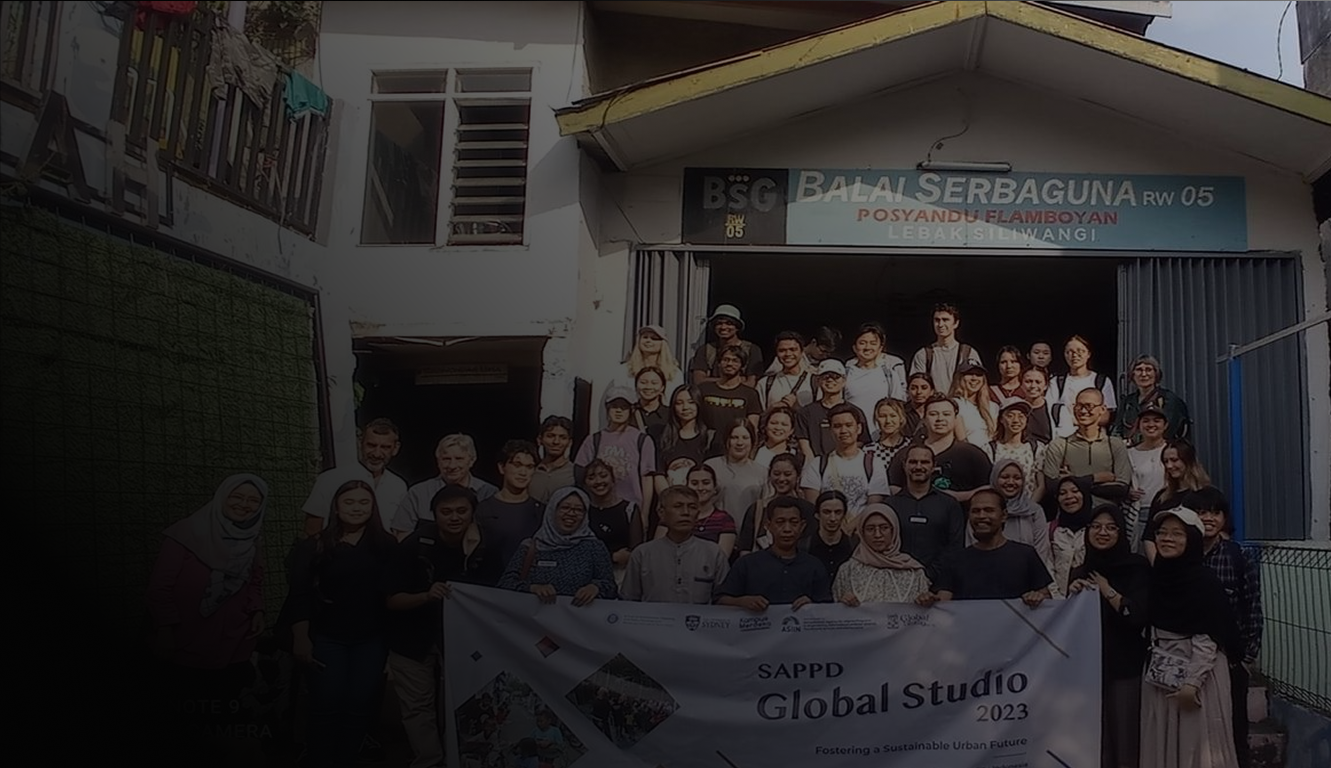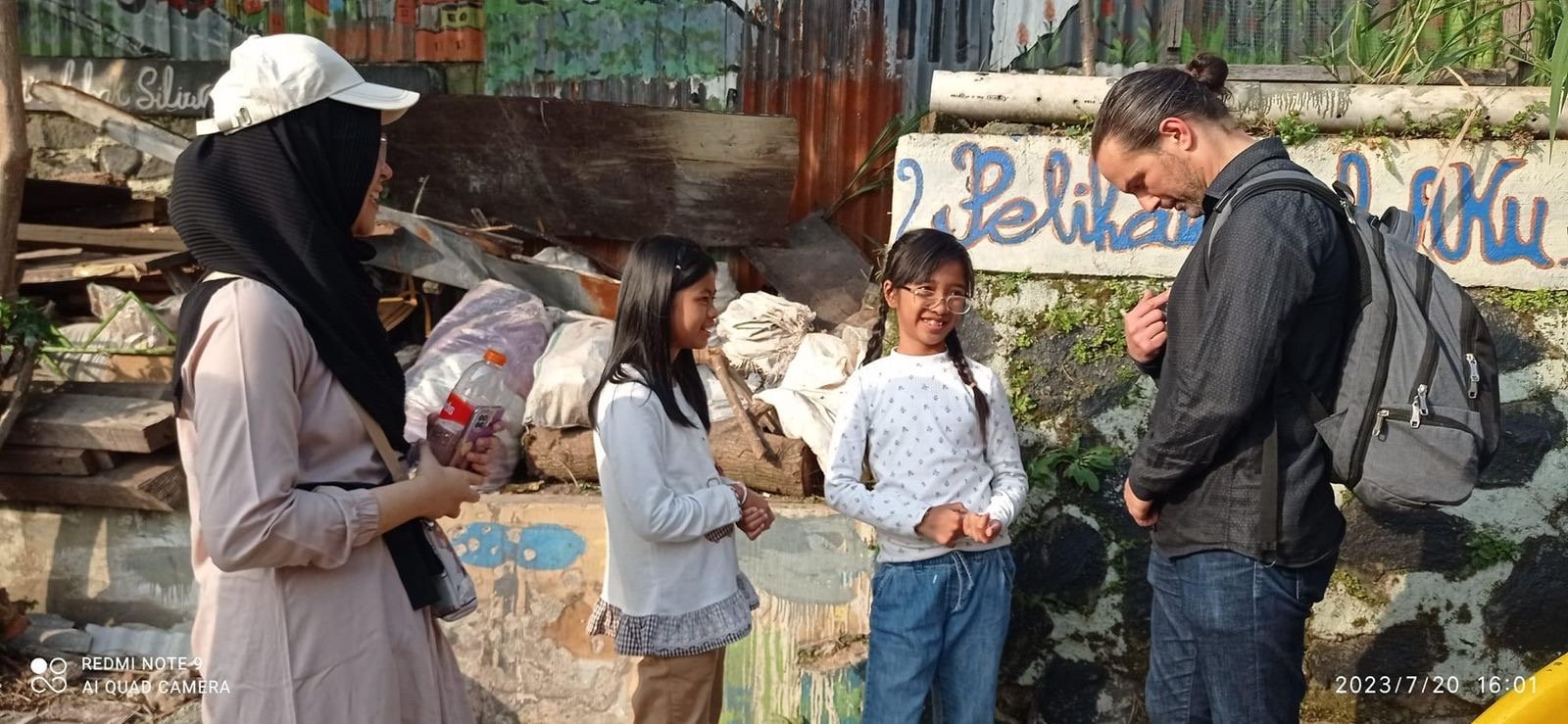
SAPPD Global Studio
People
Location
Duration
Expertise
Me (Researcher) + product designers, urban designers, and business majors from China, Indonesia, and Australia.
Bandung, West Java, Indonesia
16th-29th of July 2023 (2 weeks)
Research & Analysis
Solution Definition
What was the task?
Sustainable Urban Design in Bandung, Indonesia.
As part of an international collaboration with the Bandung Institute of Technology (ITB) and the Renmin University of China, this intensive design studio focused on exploring pathways to implement UN Sustainable Development Goal 11: Sustainable Cities and Communities in the context of the Global South. Spending two weeks on-site in Bandung, Indonesia, I worked alongside local and global peers and academics to investigate urban challenges shaped by the city’s social, cultural, and environmental landscape.
Applying Design Thinking methods and engaging in cross-cultural collaboration, we conducted ground research and co-designed urban interventions aimed at reimagining public spaces, services, and community systems. Our solutions prioritised economic viability, cultural sensitivity, and environmental sustainability, addressing the unique needs of Bandung while promoting balanced relationships between people, the built environment, and nature.
What’s the problem?
Lebak Siliwangi, a kampung (informal settlement) in Bandung, Indonesia, faces significant solid waste management challenges. Informal and inconsistent disposal systems result in waste accumulation in waterways, public spaces, and drainage systems, contributing to environmental pollution and health risks for residents.
Aligned with UN Sustainable Development Goal (SDG) 11.6, our goal was to reduce the environmental impact of cities by improving waste collection and management systems, while respecting the community’s existing informal practices and socio-economic constraints.
Before diving into user research, we needed to understand the context in which we were designing in.
Doing our research
Research Aim: To effectively promote responsible solid waste management, with the means to reduce the amount of solid waste ending up in waterways and public spaces.
To support our aim, we underwent extensive secondary research, different programs and past works to contextualise our own response to responsible waste management for Lebak Siliwangi
From there, Our team began conducting primary research, employing a mixed-methods, field-based research process to understand the complexities of waste management in the kampung.
Key methodologies included:
We then triangulated the results of these research methods in order to best inform our mapping and typology analysis using ArcGIS based informed by primary and secondary data.
24
Observations
… using Avenza maps to document waste disposal behaviors, dumping hotspots, and the physical landscape, including narrow alleyways that hinder waste collection.
20
Semi-structured Interviews
… residents and local RW (residential ward) leaders to gather insights into waste management practices, community attitudes, and the effectiveness of existing interventions.
52
Survey Responses
… collecting quantitative data on waste disposal preferences and perceived barriers.
What did we find?
To understand the existing waste management systems in Lebak Siliwangi, I conducted a typological analysis of both formal and informal waste disposal systems.
After conducting our own research, we turned to look at existing waste management practices in other informal settlements around the world, assessing what worked, what failed, and how interventions could be adapted to Lebak Siliwangi’s context.
What can we learn from what has been done before?
One-size-fits-all solutions don’t work – Successful interventions tailor their approach to the local social, economic, and infrastructural realities rather than imposing standardized models.
Community participation is essential – Programs that solely relying on government interventions are unsustainable in the long-term.
Financial sustainability determines longevity – Many initiatives failed due to inconsistent funding.
Informal networks are valuable, not barriers – While informal systems are often seen as disorganised, case studies showed that leveraging these existing structures, rather than replacing them, improved adoption rates.
Behavioral change requires positive reinforcement – Top-down approaches relying on punitive measures (fines, enforcement) often failed due to low trust and lack of engagement.
What are the opportunities and constraints?
Constraints: Addressing Systemic Barriers
Limited Infrastructure – Narrow alleyways and irregular road access make conventional waste collection infeasible, requiring localised, decentralised disposal strategies.
Fragmented Governance – Waste management is divided between municipal and informal actors, leading to gaps in service and accountability.
Economic Barriers – Without financial or social incentives, long-term engagement in sustainable waste practices may decline.
Community Trust & Buy-In – Past top-down interventions failed due to lack of trust and participation. New initiatives must be community-driven and co-designed for success.
Opportunities: Leveraging Community Strengths
Community-Led Solutions – Existing self-organised cleanup efforts can be reinforced with structured incentives and participatory engagement to sustain long-term impact.
Leveraging Informal Networks – Formalising the role of RW leaders and waste collectors can create a more efficient and trusted waste management system.
Low-Cost, Scalable Interventions – Creative, behaviour-driven solutions like gamified waste bins and educational murals can foster lasting behaviour change without heavy infrastructure investment.
Policy Alignment with SDG 11 – A growing focus on sustainable urbanisation presents an opportunity for government collaboration and funding to support long-term waste initiatives.

Designing for Context-Specific Solutions
Our proposed solutions
Understanding these insights, I focused on designing interventions that aligned with the community’s existing behaviors, infrastructure limitations, and governance structures. The proposed solutions prioritised:
Key Learnings: Designing for Adaptability, Community, and Real Impact
Reflections
This project was an eye-opening experience that fundamentally challenged me to rethink urban sustainability through a user-centered lens, reinforcing that good design is not about imposing external solutions but about working with existing community systems to create meaningful, lasting change.
Coming from an urban environment in the Global North, I initially saw informality as a lack of structure—a problem to be fixed. However, through embedding ethnographic research, participatory design, and system thinking in Lebak Siliwangi, I gained a new perspective: informal systems are not broken; they are adaptive, resourceful, and deeply communal. The real challenge was not replacing these systems, but strengthening them with design interventions that aligned with community behaviours and motivations.
Beyond design, this experience strengthened my adaptability, empathy, and ability to navigate real-world complexities. Most importantly, this experience reinforced that design should always start with empathy. It’s easy to approach sustainability from a macro-level, data-driven perspective, but true impact happens at the intersection of lived experience and practical feasibility. As I continue my journey as a designer and researcher, I carry forward a deeper appreciation for context-sensitive design, participatory research, and the power of community-led solutions.
~ Serena


















